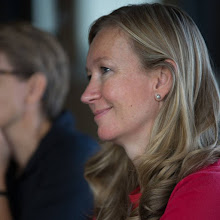Status Updates as Storytelling?
In my work on Facebook, I am trying to make sense of the Status Updates in Facebook. Can we consider them to be a form of story? If we take classical definitions of narrative as reports of events that happened in the past, where those events are ordered in a time sequence, usually with a marked change in state and a ‘beginning-middle-end’ structure, then Status Updates seem not to fit the bill. After all, status updates:
(1) Do not necessarily report events that happened in the past. They can be the ‘breaking news’ situated in the present or project future events yet to happen.
(2) Although Status slots are updated chronologically, the events in them need not be causally or thematically linked other than that they are mediated through the consciousness of the Facebook updater.
(3) Status updates are episodic in nature, so are part of an ongoing pattern of online interaction without a defined beginning, middle and end. They are spatially fragmented, without clearly defined boundaries as they are distributed across the RSS feeds into Friends’ profiles.
(4) They tend to be low in tellability, often equated with low narrativity.
So why do I keep wanting to treat them as narratives? Here are my initial reasons:
(1) When collated, they form a chronicle of ‘updates’ that unfold over time, forming a constellation of micro-episodes of the user’s life-story. As such, they seem to be related both to online impression management, autobiography and narrative as an entry point into identity analysis.
(2) At micro-level they can contain narrative-like elements. These include both temporally ordered events and evaluation of those events.
(3) They call into question the idea of ‘tellability’, both because of the kinds of topics people update about (typically mundane/everyday) and because the updates themselves often make use of what Labov calls ‘evaluation’ markers.
So clearly, the Status Updates are outside the narrative canon (both spoken, literary and online), but might well be a useful way of reflecting on (and maybe even reworking) our narrative vocabulary. The frameworks I am using draw heavily on Georgakopoulou’s (2007) work on Bamberg's concept of Small Stories, together with Jill Walker's ideas about distributed narratives and sociolinguistic work in CMC. There’ll be more to come as I try and figure out my ideas. But let me know if you have any useful leads.
Labels: facebook distributed narrative smallstories statusupdates


3 Comments:
Have you considered Twitter as a means of gathering similar data? As a website, it's far more focused on status updates than Facebook, and easier for people to update. Regular twitterers (is that a word?) such as the celebrities Stephen Fry and Jonathan Ross have built up large communities of "followers" devoted to their every update.
I did think about Twitter - and I might well go on to look at that. But I wanted to start with Facebook first, (1) because I am a Facebook user and not on Twitter (no mobile access to Facebook yet for me) and (2) because I was interested in the 'everyday' stories of people in communities who were known to each other. But Twitter may well make a good point of comparison, so thanks for the thought!
Ruth, my name is Claudio Soares, I'm a Brazilian writer, and I'm twitterizing my 2006 novel "Santos Dumont Number 8: The Book of Superstitions": http://www.teleread.org/2009/04/08/the-twitterization-of-santos-dumont-numero-8/. I just found your excellent blog, and it was because of my questions about the narrative in social networks. My proposal for this experiment is to examine the internet as a space for creating narratives. I observed that the novel is being rewritten on Twitter, because the medium has influence over the processes of storytelling. On Twitter, tt works very similar to what you reported about the Facebook. The original novel [on paper] had the feature of being hypertextual [if the reader followed the "link" I defined at the end of each chapter] or traditionally sequential [read in the traditional order, page after page]. I believe that the reader can and must set up his/her experience of reading. That's exactly what we are trying to assess with the @sd8 experience. It is at http://twitter.com/sd8. Best regards, Claudio Soares
Post a Comment
<< Home